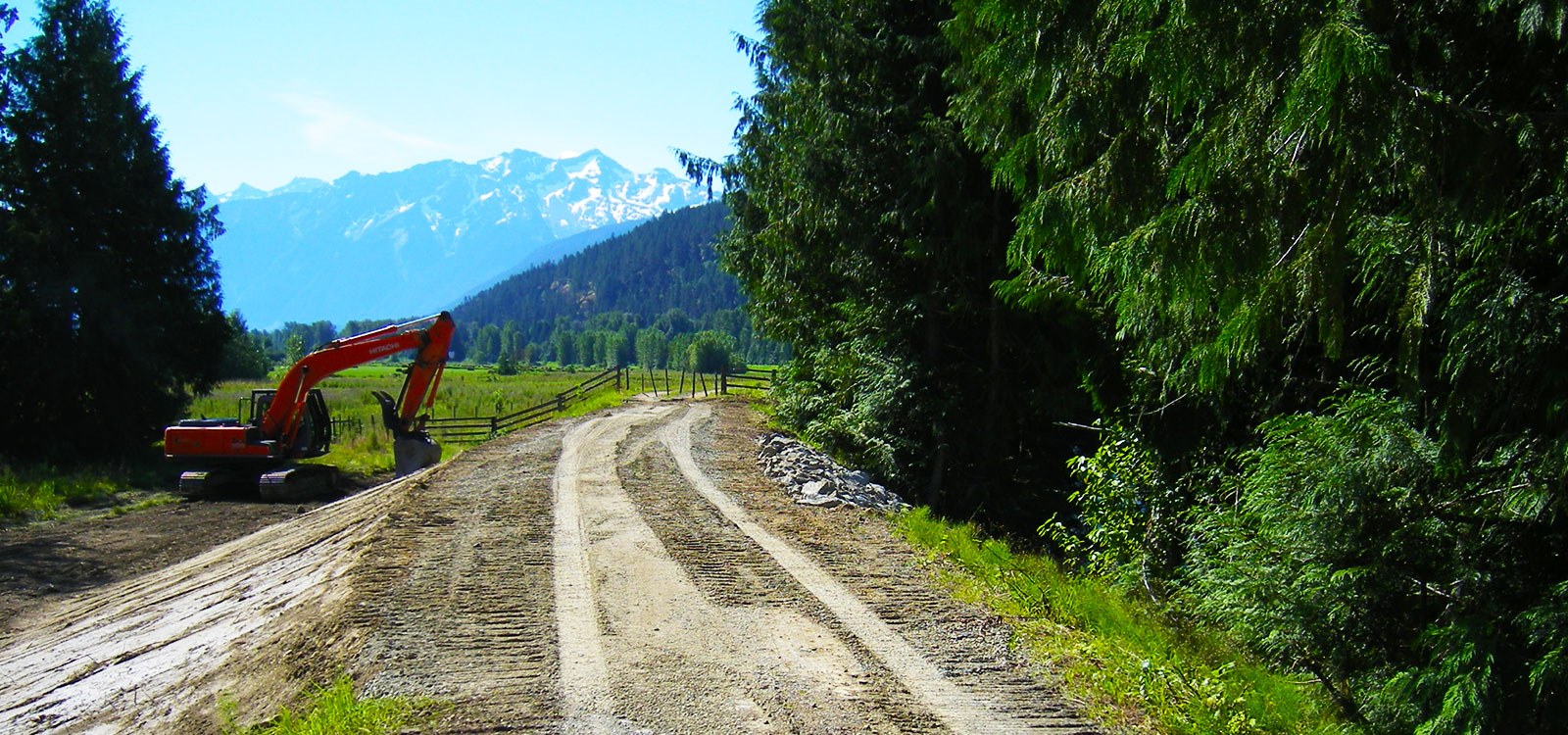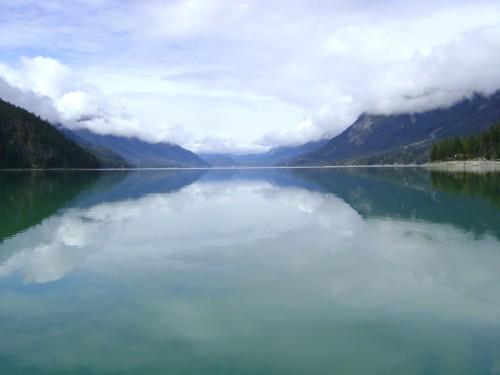Ditches and Culverts
Drainage ditches are constructed to collect and convey water from low laying areas in the valley to creeks and rivers.
Some drainage ditches in the valley are quite long, up to 14km and pass through many properties on route. A drainage ditch relies primarily on slope to effectively convey water. Other factors that may impact the effectiveness of a ditch include how obstructed the flow of water is, improperly sized culverts or bridge crossing, sediment buildup and intensity of a rainstorm or snowmelt.
Ditch Maintenance and Water Stewardship
Many of the ditches in the valley, including Arn Canal, were originally small streams. Historically, streams meandered across the valley floor connecting wetlands to creeks and rivers and supported a wide variety of habitat. In many cases, these watercourses were straightened and turned into a network of ditches to dry out the land for agricultural or development purpose. In doing so, habitat was significantly impacted. Today managing and maintaining these ditches is a delicate issue.
Maintenance typically consists of removing vegetation and sediment by hand or by machine. In some cases, these activities may have negative impacts on habitat and subsequently are regulated by the Ministry of the Environment and Department of Fisheries and Oceans. In these situations a strong case must be built for in channel work. A detailed hydraulic assessment, habitat assessment, and mitigation plan must be submitted for approvals before work commences.
In 2008 the PVDD began to classify fish values in key drainages in the valley in order to streamline maintenance activities wherever possible. The PVDD has also commissioned a survey and hydraulic assessment of the Arn Canal. The results of these assessments will facilitate informative decision making for future projects on the Arn Canal.
Culverts with Flap Gates
How does water on the inside of the dykes escape? Drainage ditches in the valley pass through dykes eventually connecting to a creek or river. Culverts equipped with flap gates, sometimes referred to as a “Flood Box”, facilitate this connection. Culverts installed through the dyke allow water to escape the ditch. The trick is to keep water from the creek or river from flowing back up the culvert and flooding adjacent properties. This is achieved by using a flap gate, which is attached to the riverside of the culvert. The flap gate is hinged to the culvert and when river levels rise, water pressure closes the gate preventing water back flow into the culvert. In doing so, it also prevents drainage ditch water from escaping resulting in localized pooling on the inside of the dyke. Once river levels moderate the flap gates open and drain land on the inside of the dykes. Without flap gates both storm water and river water would collect inside of the dykes causing wide spread flooding.
Culvert and Flap Gate Maintenance
Culverts play a critical role in flood protection and must be consistently monitored and maintained. Maintenance activities range from clearing debris from culvert inlets and outlets to replacing culverts that are considered no longer structurally sound.




